Growing repair strawberries at home
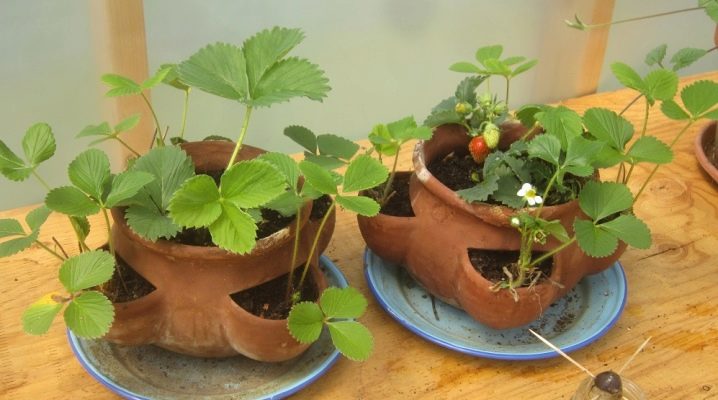
If strawberries were fruitful longer, there would be no price for them. Although a rather short harvest period does not deprive the berry of such a number of fans. But the most persistent of them come up with the idea of "settling" strawberries at home, making its yield almost year-round. And it turns out that this is really possible. True, there are many conditions and concerns, but the result is worthwhile.

Suitable varieties
Growing remontant strawberries on a windowsill is a valuable idea only if the berries yield a harvest in winter. There is no need to talk about ordinary varieties: they lay flower stalks with a short daylight hours, bear fruit once, and there is simply no point in growing them in pots. The so-called varieties of a neutral day flower stalks can give out in 4 waves, berries on the bushes are formed constantly, at short intervals. And it is this option that is acceptable at home.
The varieties will grow well at home:
- Elan;
- "Temptation";
- "Yoke";
- "Tristan";
- "Geneva";
- "Queen Elizabeth";
- "Homemade delicacy";
- "Grandian";
- "Albion";
- Capri;
- "Profusion".
Of course, other varieties are being considered too, but yields cannot be predicted.
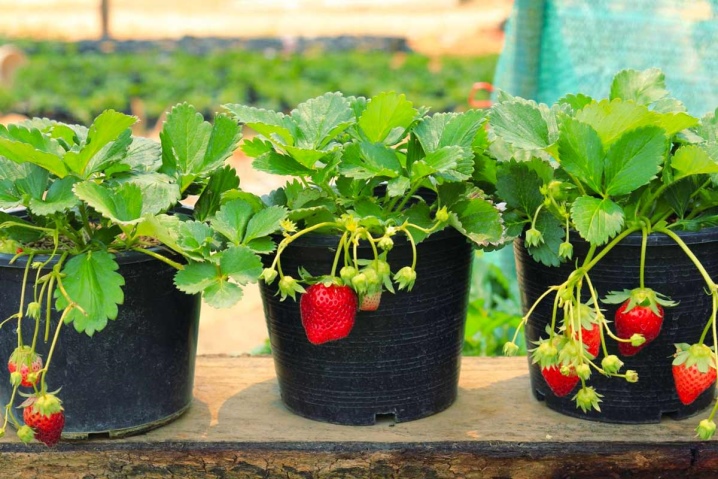
More precisely, this process is less successful, but the listed varieties can definitely be grown in an apartment. A lot of information has been collected on them, a lot of experience that makes the cultivation of berries predictable.
Experts advise betting on the cultivation of curly and musty varieties of berries. If you want to diversify your harvest, you can think about growing strawberries, the varieties "Ali Baba" and "Baron Solemakher" in this sense also well declared themselves.

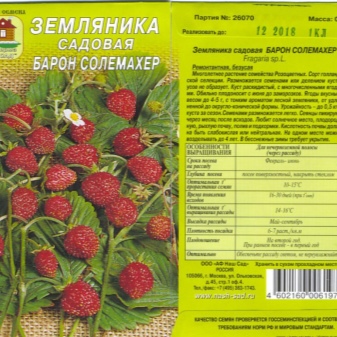
Requirements for conditions
A clear and sunny day is the first rule for gardeners who decide not to wait for the season and grow strawberries at home.... It is better to put boxes with plants on the windowsill, the window of which faces south.
If you arrange a garden on the north window, you will have to highlight the plant much more. In any case, the total daylight hours are 12 hours, and in winter this can only be achieved with backlighting. Therefore, everyone who wants to grow strawberries all year round will have to buy fluorescent lamps, or even special phytolamps. There are other requirements as well.
- Temperature... The optimal interval for growing strawberries at home is 23–25 ° C. If the temperature is higher, there will be problems with pollination, usually fewer berries appear in hot apartments. If the temperature is low, fungus and rot will rush to attack the strawberries.
- Humidity... Strawberries do not need increased moisture. Usually the plant will normally adapt to indoor conditions. But problems cannot be avoided if the boxes stand next to the batteries. Then you will have to put containers with water next to them.
- Landing capacity. Any that fits the volume will be fine. The minimum diameter is 25–30 cm. It can be a container, box, or pot. Ordinary balcony boxes are fine as well, but you have to worry about the drainage holes. If they are not done, water stagnation cannot be avoided, which is extremely harmful to the roots.
- Priming... The soil for the berries should be loose, quite nutritious and moisture-absorbing. For planting a culture, a humus soil mixture is chosen, to which compost or peat and a little sand are added. The soil should be neutral or slightly acidic. Strawberries will not grow normally on alkaline and acidic soils.
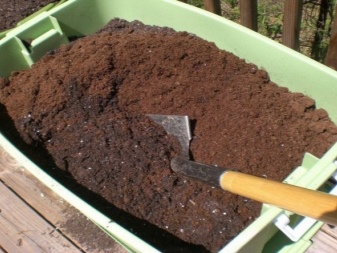
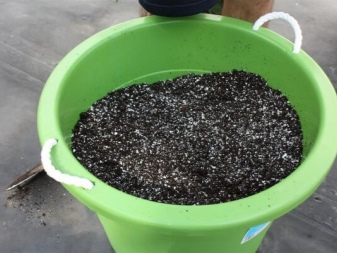
Landing
You can buy seedlings ready-made (which is more expensive) or grow them yourself from seeds (cheaper, but more difficult).If you like the cultivation process, botanical experiment, observation of growth, tinkering with seeds will, of course, be more interesting. And this also has its own benefit: strawberries grown from seeds get used to the conditions better, it will not hurt during transplantation, and it will also grow quickly. Landing takes place step by step.
- Fill a small plastic container with loose, rich earth.
- Distribute the seeds evenly over the surface of the ground, pressing them slightly.
- The seeds must be stratified, and therefore a container with already sown strawberries is sent to the refrigerator (in the vegetable compartment) for 3 weeks, it can also be taken out into the street, buried in the snow.
- When the stratification stage is over, the container with seeds is sent to a warm place with good lighting.
- The first shoots can be expected in 14–20 days. When they fully germinate, the surface of the earth between them must be covered with calcined river sand. If not, vermiculite will do. This is a good defense against blackleg, which often attacks strawberries.
- As soon as 2 true leaves develop on the samples, the strawberries can be dived into separate pots (or into one large box).
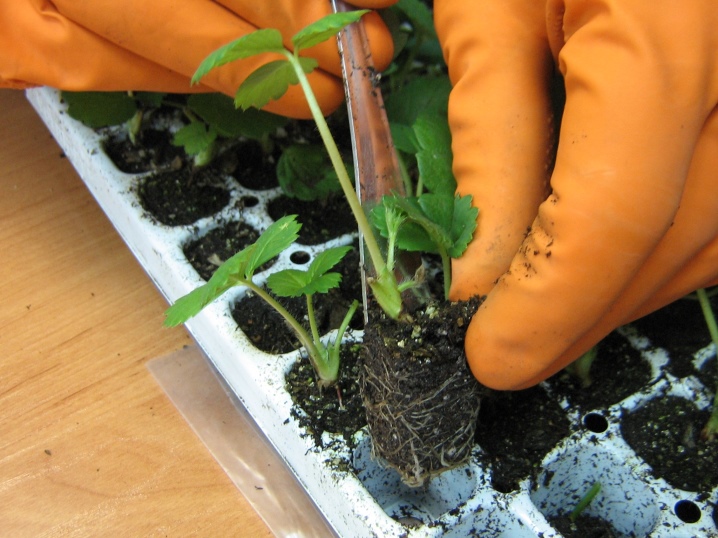
Harvesting is related to the variety and planting date. Until the fruiting period, 5-6 months should pass from the moment of sowing the seeds. You can also plant seedlings. In this case, you will have to wait much less: fruiting will begin on average in 1.5 months.
- If the seedlings have an open root system, they should be soaked in a growth stimulator, for example, in Kornevin.
- Seedlings should be planted before the root collar. When deeply deepened, the plant dies.
- After successful planting, the soil in the container must be watered abundantly, after which the seedlings are transferred to a warm and fairly lit area.
- If the plant is bought already in a pot, then it must be transplanted into a larger container. Plants that are planted in this way rarely get sick and start growing very quickly.
An important point of planting is not to cover the leaves with earth. They are vulnerable, they can get sick from such negligence.

Care
With proper care, the plant can bear fruit for many months a year, almost continuously.
- Regular and abundant watering. This berry will not tolerate excessive moisture, but the crust on the upper layer of the soil mixture is dangerous. Water for irrigation is used only filtered (purified from chlorine), always at room temperature. Watering strawberries directly from the tap is a huge mistake. You can use melt water, but you need to monitor its temperature. Watering is carried out only at the root; a lot of moisture should not get into the center of the outlet. And it is also advisable not to pour on the leaves. The higher the air temperature, the more often the strawberries need to be watered.
- Top dressing... Good nutrition is what a berry needs. Mineral fertilizers and organic matter are suitable for feeding. You can take a fermented solution of nettle, as well as (which happens much more often) used tea leaves. It is also used as mulch, delicately distributed over the surface of the earth.
- Pruning... This will happen every 2 or even 3 years. This is how the rejuvenation of the plant is achieved. But pruning cannot affect the growing point. After pruning, the crop needs to be reinforced with nitrogenous fertilizers.
- Pollination... At home, it will not work to attract insects to pollination, so everything will have to be done manually. But this is not difficult: you need a brush with not very large bristles. It is used to transfer pollen from one flower to another. The fan will also help in pollination - its air flow is directed towards the seedlings. And you will have to turn it on at least twice a day.
- Diseases / pests. One of the main aggressors attacking seedlings is the spider mite. To get rid of it, use a garlic tincture. "Actellik" saves from other pests.

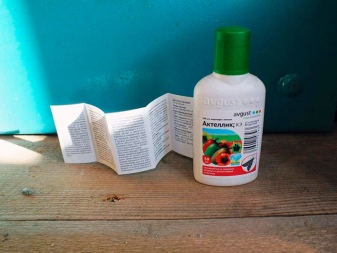













The comment was sent successfully.